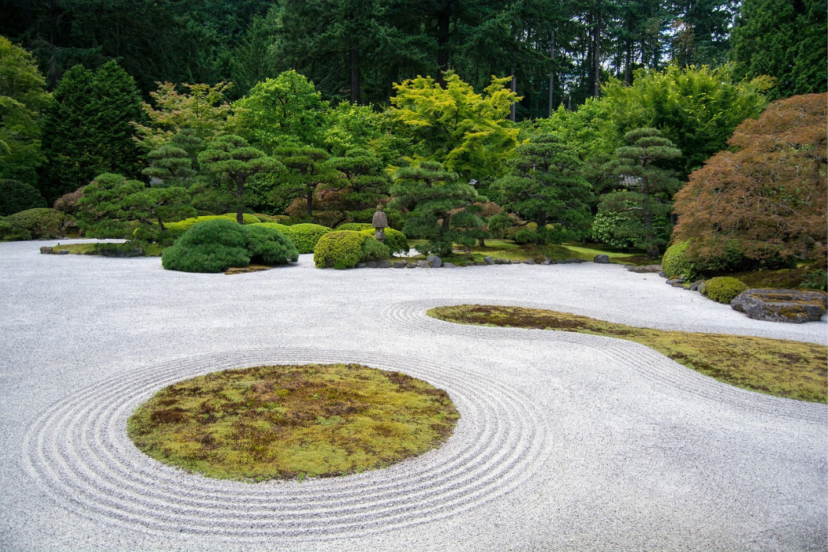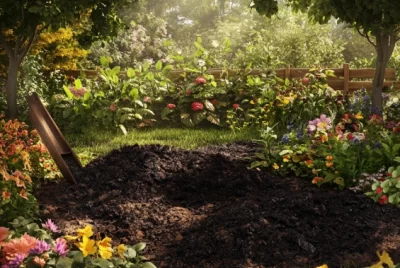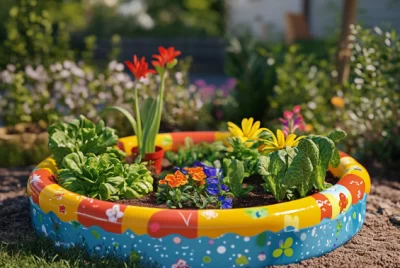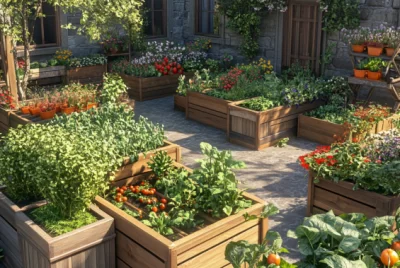Sand Gardening: Growing Without Soil
Sand gardening might sound a bit unusual at first, but it’s a fascinating and creative way to grow plants. Imagine turning a patch of sand into a lush, green space full of life. This unique approach to gardening has its challenges, like figuring out how to keep plants happy in sand instead of soil. But don’t worry! The rewards, including stunning landscapes and the joy of overcoming these challenges, make it all worth it.
Introduction
Overview of Sand Gardening
Sand gardening is exactly what it sounds like: using sand as the main medium to grow plants. It’s different from the regular gardens we’re used to, which mostly use soil. Sand gardens can be beautiful and are especially great for areas where the soil is not ideal for planting. People have been creating gardens in sand for a long time, in many parts of the world, because of its unique benefits and the special look it gives to outdoor spaces.
Benefits of Sand Gardening
One of the coolest things about sand gardening is that it’s perfect for places with really dry weather. Sand drains water super fast, which helps in areas where soil might stay too wet and harm the plants. Also, because sand is pretty simple and not full of stuff like soil is, there are fewer weeds to deal with. That means less time pulling out unwanted plants and more time enjoying your garden!
Understanding Sand Gardening
What is Sand Gardening?
At its heart, sand gardening is using sand as the base for growing your plants. This doesn’t mean you can only grow cacti or desert plants, though. With the right care, you can grow all sorts of plants in sand, from flowers to veggies. The trick is knowing how to make the sand a place where plants can thrive, which usually means adding some nutrients and keeping an eye on watering.
The History of Sand Gardening
People have been gardening in sand for hundreds of years. It’s not just a new trend! In places like Japan, sand has been used in gardens for a really long time to create peaceful, beautiful landscapes. These gardens were not just about growing food; they were also about making serene spaces where people could relax and feel close to nature.
Sand vs. Soil: Key Differences
The main difference between sand and soil is what they’re made of. Soil is a mix of lots of things: tiny bits of rock, dead plants and animals, and other organic stuff. Sand is mostly just tiny pieces of rock. This means sand doesn’t hold onto water or nutrients the way soil does. But with a little bit of work, sand can become a fantastic place for a garden.
Essential Components of Sand Gardening
Types of Sand for Gardening
When it comes to sand gardening, not all sand is created equal. The type of sand you choose can greatly affect your garden’s success.
River Sand
River sand is a popular choice for sand gardens. It’s naturally smoother and has rounded edges from being washed over time by water. This type of sand is great because it drains water well and doesn’t compact too much, allowing plant roots to grow freely.
Sharp Sand
Sharp sand, also known as builders’ sand, has a more jagged shape and is another excellent option for sand gardening. It helps improve drainage and air flow around the plant roots. Just be sure it’s free of any chemicals or salts that could harm your plants.
Sand Gardening Tools and Equipment Needed
To get started with sand gardening, you’ll need some basic tools. These include a shovel for moving and mixing sand, a rake for leveling and aerating, and watering cans or a hose with a fine spray setting. If you’re planning a larger garden, you might also want a wheelbarrow to transport sand and compost.
Basic Tools for Starting
Shovel
Rake
Watering can or hose
Advanced Tools for Expert Gardeners
As you become more experienced, you might want to invest in some advanced tools like a soil pH tester, a moisture meter, and specialized fertilizers for sand gardening. These can help you tailor your gardening practices to the specific needs of your plants.
Sand Gardening Set Up
Choosing the Right Location
The location of your sand garden is crucial. You’ll want a spot that gets plenty of sunlight since most sand-loving plants thrive in sunny conditions. Also, consider the natural drainage of your chosen location. Since sand drains quickly, a slightly elevated area can help prevent water from pooling around your plants.
Preparing the Sand
Before planting, you might need to prepare your sand by mixing it with some organic matter. This can include compost, peat moss, or aged manure, which will help retain moisture and nutrients in the sand. A good mix is about 10% organic matter to 90% sand.
Mixing with Organic Matter
Mixing sand with organic matter is simple. Spread a layer of organic material over your sand area and use a shovel or a tiller to mix it in evenly. This will help create a more hospitable environment for your plants to grow.
Designing Your Sand Garden Layout
When designing your sand garden, think about how you can use different plants and decorative elements to create a visually appealing space. Consider using taller plants as a backdrop and shorter plants in the front. You can also add paths of stepping stones or sand to define different areas of your garden.
Plant Selection for Sand Gardening
Choosing the right plants is key to a successful sand garden. You’ll want to look for plants that are well-suited to dry, sandy conditions.
Best Plants for Sand Gardens
Succulents and Cacti
Succulents and cacti are natural choices for sand gardens. They’re adapted to survive in dry conditions and can thrive in sandy soil. Examples include aloe, agave, and various types of sedum.
Native Plants
Consider native plants that are accustomed to your local climate and soil conditions. These plants will likely do well in sand with minimal additional care. Check with your local gardening center or extension service for recommendations.
Plants to Avoid
It’s best to avoid plants that require rich, moist soil, such as certain tropical plants or shade-loving ferns. These will struggle in the fast-draining conditions of a sand garden.
With the right preparation, tools, and plant choices, your sand garden can become a thriving, low-maintenance oasis. Remember to regularly check the moisture and nutrient levels in your garden, as these can fluctuate more rapidly in sand than in soil. With a bit of care and creativity, you can create a beautiful and unique garden space that stands out from the crowd.
Sand Gardening Maintenance and Care
Watering Techniques
In sand gardening, watering needs a careful approach. Sand drains water quickly, so you’ll need to water more frequently but with less water each time. This prevents water waste and ensures your plants get the moisture they need without becoming waterlogged.
Frequency and Amount
A good rule of thumb is to water little and often. During hot weather, watering in the early morning or late evening will reduce evaporation and help keep your plants happy.
Fertilizing Your Sand Garden
Sand doesn’t hold nutrients as well as soil, so you’ll need to fertilize your plants regularly. Opt for a slow-release fertilizer that will feed your plants over time.
Organic vs. Chemical Fertilizers
Whenever possible, choose organic fertilizers. They’re not only better for the environment but also improve the sand’s ability to retain water and nutrients.
Managing Pests and Diseases
Pests and diseases can still affect sand gardens. Keep an eye out for any signs of trouble and use environmentally friendly treatments whenever possible. Often, healthy, well-cared-for plants are less susceptible to issues.
Sand Gardening Seasonal Care
Your sand garden will need different types of care as the seasons change.
Spring Care Routine
Spring is the time to prep your garden for the growing season. Add fresh organic matter, check for any winter damage, and start planting your chosen plants.
Summer Maintenance Tips
Summer is all about watering and keeping your plants protected from the heat. Mulching can help retain moisture and keep roots cool.
Fall Preparations
In the fall, prepare your garden for the colder months. This might include removing annuals, adding more organic matter, and planting any bulbs for spring.
Winter Protection Strategies
In areas with cold winters, protect your plants with covers or bring sensitive ones indoors if possible. This is also a good time to plan for the next season.
Enhancing Your Sand Garden
Adding decorative elements and water features can turn your sand garden into a peaceful retreat. Stones, pebbles, and sculptures add texture and interest, while a small fountain or bird bath can bring life and movement to your space.
Common Challenges and Solutions in Sand Gardening
Dealing with sand’s poor nutrient retention and fast drainage might seem daunting, but with organic matter and regular fertilization, these challenges can be overcome. Weed control is usually easier in sand gardens, but stay vigilant.
Conclusion
Sand gardening opens up a world of possibilities for gardeners, especially in areas where traditional soil gardening is a challenge. By choosing the right sand, preparing it with organic matter, selecting suitable plants, and providing regular care and maintenance, you can create a stunning garden that’s as unique as it is beautiful.
Remember, the key to a successful sand garden is understanding its needs and adapting your gardening practices accordingly. With a little effort and creativity, you can transform a barren sandy space into a thriving oasis that not only conserves water but also provides a serene and inviting outdoor area for everyone to enjoy.
Whether you’re a seasoned gardener looking for a new challenge or a beginner eager to try something different, sand gardening offers a rewarding experience that’s both environmentally friendly and visually appealing. So, grab your tools, choose your sand and plants, and embark on the rewarding journey of sand gardening.
Sand Gardening Frequently Asked Questions
FAQ 1: What makes sand gardening a good choice for arid climates?
Answer: Sand gardening is ideal for arid climates because sand has excellent drainage properties, preventing water from pooling around plant roots, which can cause rot. This type of gardening conserves water by requiring less frequent, though more precise, watering schedules, making it a sustainable option for dry regions.
FAQ 2: Can you grow vegetables in a sand garden?
Answer: Yes, you can grow vegetables in a sand garden, but it requires careful selection of plants and additional preparation. Vegetables that tolerate well-drained conditions, such as carrots, radishes, and certain leafy greens, can do well. Mixing organic matter into the sand improves its water and nutrient retention, creating a more hospitable environment for vegetables.
FAQ 3: How often should I water my sand garden?
Answer: Watering frequency in a sand garden depends on the weather and the types of plants you have. Generally, sand gardens need watering more often than soil gardens but with less water each time to avoid wasting resources. A good approach is to water little and often, adjusting based on the plant’s needs and weather conditions.
FAQ 4: Do I need to fertilize my sand garden more often than a soil garden?
Answer: Yes, since sand has a lower capacity to hold nutrients than soil, you’ll likely need to fertilize your sand garden more frequently. Using slow-release organic fertilizers can provide a steady supply of nutrients to your plants over time, helping them thrive without the need for excessive chemical inputs.
FAQ 5: What are the best plants for sand gardening?
Answer: The best plants for a sand garden are those that are well-adapted to dry, well-drained conditions. Succulents, cacti, and native plants that thrive in your local climate are excellent choices. Research plants that are native to sandy environments for the best success, as they will be naturally equipped to thrive in your sand garden.




